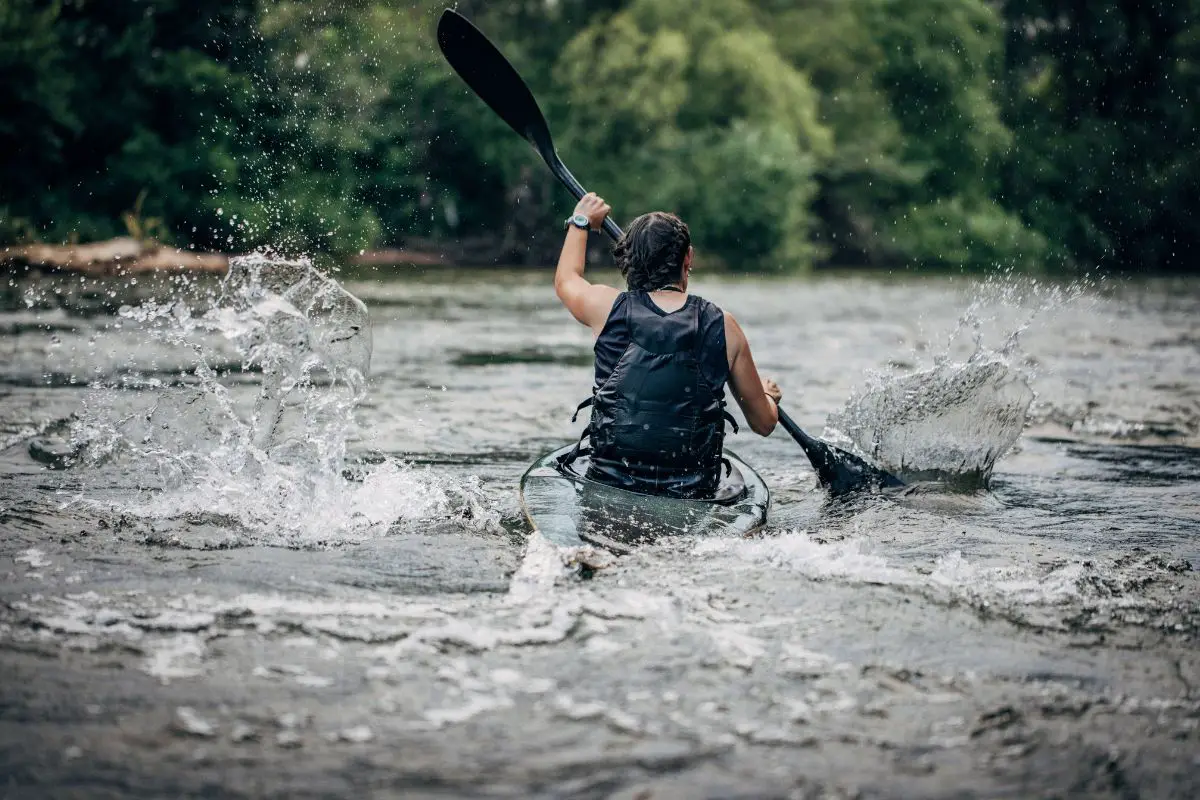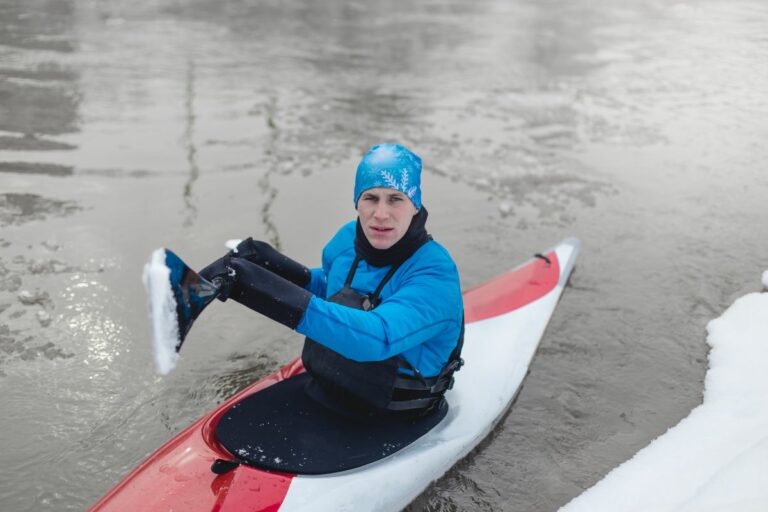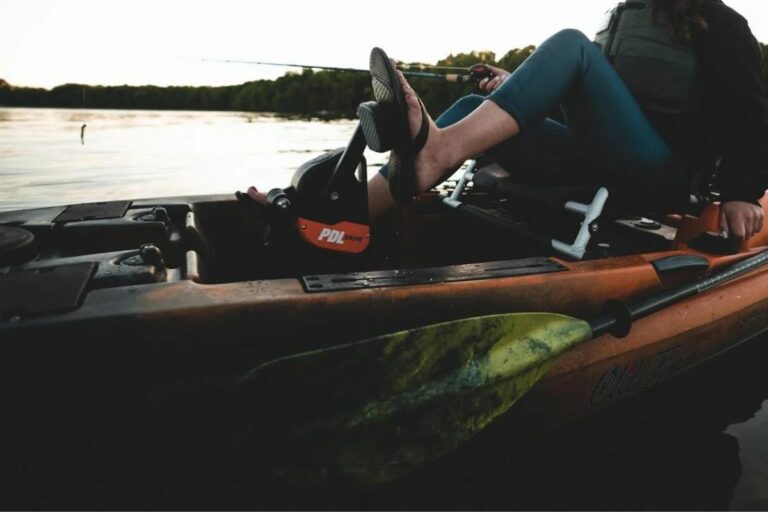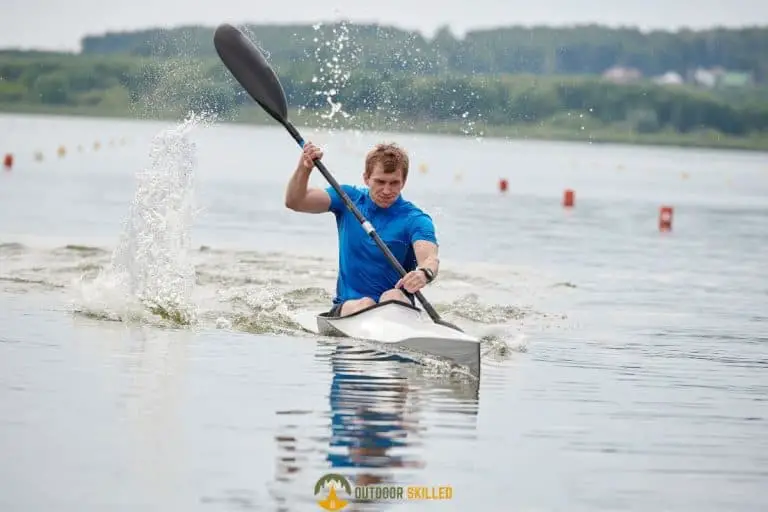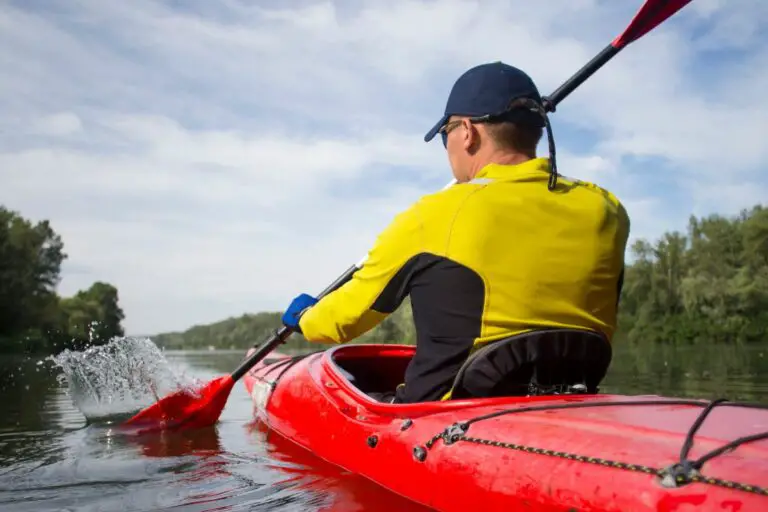When Is It Too Windy to Kayak? Explained With a Map
Kayaking is a thrilling and exciting way to explore the great outdoors and enjoy the beauty of nature from a unique perspective.
However, when it comes to kayaking in windy conditions, things can get challenging and even dangerous. So, when is it too windy to kayak?
It’s too windy to kayak when winds are stronger than 15-20 mph. It’s inadvisable to kayak in these conditions, as strong winds can create dangerous waves and currents, increase the risk of capsizing or losing control of the kayak, and make paddling difficult and exhausting.
Keep reading to learn more about how wind conditions affect kayaking and when it’s too windy to kayak safely.
Table of Contents
Do Wind Conditions Affect Kayaking?

Wind conditions can significantly affect kayaking, making it more challenging and potentially dangerous.
One of the primary ways that wind affects kayaking is by creating waves.
As wind speed increases, so do the size and intensity of the waves, making it harder to maintain stability and balance in the kayak.
This can be especially challenging for beginner kayakers, who may not yet have developed the necessary skills to navigate choppy waters.
Wind direction is another important factor to consider when kayaking.
If the wind is blowing perpendicular to your intended direction, it can push your kayak off course and make it harder to maintain control, especially if you’re kayaking in open water, where there are no obstacles to block the wind.
In addition to the physical challenges posed by wind, it can also affect the mental aspects of kayaking.
Strong winds can be loud and intimidating, making it harder to concentrate and maintain focus in situations where you need to make quick decisions or react to unexpected changes in the water conditions.
Can You Go Kayaking When It’s Windy?
You can go kayaking when it’s windy, but given the potential risks associated with kayaking in windy conditions, it’s important to take the necessary precautions to ensure that you can do so safely.
It’s also important to consider your own experience level. If you’re a beginner or not confident in your ability to handle choppy waters, it’s best to err on the side of caution and wait for calmer conditions.
When Is It Too Windy to Kayak?
It’s generally considered too windy to kayak when wind speeds exceed 15-20 mph or when wind gusts are unpredictable. At these wind speeds, the water can become choppy, and waves can become too large for recreational kayaking.
When Is It Too Windy for Kayak Fishing?
When it comes to kayak fishing, it’s considered too windy to kayak when wind speeds exceed 10-15 mph. Too much wind can impact your ability to fish effectively, as you won’t be able to cast accurately or control the position of the kayak. It can also create waves that can make it harder to detect bites.
What Is the Ideal Wind Speed for Kayaking Activities?
Wind speeds of 5-15 mph are considered ideal for recreational kayaking, as they provide a moderate challenge without creating excessively choppy water or dangerous conditions.
However, wind speeds of 5-10 mph may be preferable for kayaking fishing, as they allow you to maintain a stable platform to fish more effectively.
For more advanced kayakers or those seeking a greater challenge, wind speeds of up to 20 mph may be suitable, but it’s important to exercise caution and be prepared for more challenging water conditions.
Ultimately, the ideal wind speed for kayaking activities will vary depending on a variety of factors, including your level of experience, the type of water you’re kayaking on, and the purpose of your kayaking activity.
It’s important to be aware of your own limits and make informed decisions based on the conditions and your level of experience.
You can use the map below to check the wind directions and speeds before you go kayaking:
Tips for Kayaking in Windy Conditions
As mentioned before, kayaking in windy conditions can be challenging and risky, but it is possible to do so safely with the right techniques and equipment.
Here are some tips on how to kayak in windy conditions:
- Always wear a personal flotation device (PFD) and dress appropriately for the conditions.
- Before heading out, check the weather forecast and plan your route accordingly.
- Avoid areas that are exposed to strong winds and waves, and try to stay close to the shore where the water may be calmer.
- Choose a kayak that is suitable for the conditions. Longer, narrower kayaks tend to be more stable in windy conditions, while shorter, wider kayaks may be more prone to tipping.
- Keep an eye on the wind direction and adjust your course and paddling technique as needed.
- Try to keep your kayak pointed directly into the wind or slightly to one side. This will help you maintain control and stability.
- Use a low paddling angle to avoid getting your paddle caught by the wind. Keep your strokes close to the water and use a shorter stroke length to maintain control. You can also be extra safe by using a kayak paddle leash.
- Lean into the direction of the wind to maintain balance and prevent tipping. Keep your weight centered over the kayak, and use your paddle as a rudder to steer.
- Be aware of other boaters and obstacles in the water, and be prepared to take evasive action if necessary.
- Whenever possible, kayak with a buddy. This will make the experience more enjoyable and provide an extra layer of safety in case of an emergency.
You can also check out this video on how to properly paddle your kayak in the wind:
Remember, safety should always be your top priority when kayaking in windy conditions. If the wind is too strong or the water conditions become unsafe, it is best to head back to shore and try again on another day.
Kayak your way to Freedom
- On a budget? Check out the best fishing kayaks under $500 here and the best Fishing Kayaks under $1,000 here. Or Check the best Cheap Kayaks here.
- Going fishing? Here are the best Ocean fishing kayaks, and here are the best River Fishing Kayaks.
- You can also find the best Fly Fishing Kayaks here and the best Bass Fishing Boats here.
- A bit experienced? Check out the best modular kayaks here and the best tandem fishing kayaks here.
- Looking for something special? Check out my favorite Ducky kayaks here.
- Navigate your way with these awesome and beginner-friendly Kayak compasses.
- Going Hunting? These Duck hunting kayaks will give you an unfair advantage!
- Have a need for speed? These motorized kayaks will get you moving.
- Protect yourself from the sun with these Kayak shades, and make your kayak more comfortable with these Kayak seats.
- Keep your feet dry and warm with these superb Kayaking shoes.
- Going Kayaking in cold water? Stay warm with these Kayaking gloves.
- Paddle Less, Fish More with the Best Kayak Motors
- Looking to get a trolling motor on your kayak? Check out the best kayak trolling motor mounts here.
If you like this article, please share it or pin it, you can find the share buttons below. We will really appreciate it ❤️

